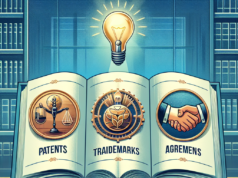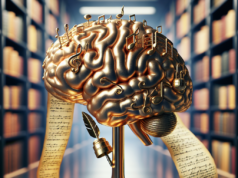
In an era where creativity and innovation are paramount, the complexities surrounding copyright disputes have become increasingly pronounced. As artists, writers, and creators navigate the murky waters of intellectual property rights, the need for effective resolution mechanisms has never been more critical. This article delves into the multifaceted world of copyright disputes, exploring the legal frameworks, resolution methods, landmark cases, and the impact of digital technology on enforcement. By unraveling the chaos surrounding these disputes, we aim to shed light on the shocking truths that often lie beneath the surface.
Understanding Copyright Disputes: An Overview of Legal Frameworks and Challenges
Copyright disputes arise when the rights of creators are infringed upon, leading to conflicts over ownership, usage, and compensation. The legal frameworks governing these disputes vary significantly across jurisdictions, with international treaties such as the Berne Convention and the Agreement on Trade-Related Aspects of Intellectual Property Rights (TRIPS) providing foundational guidelines. However, the challenges are manifold; creators often face difficulties in proving ownership, navigating complex licensing agreements, and understanding the nuances of fair use. Additionally, the rapid evolution of digital media has outpaced existing laws, creating a landscape rife with ambiguity and contention. As a result, copyright disputes can escalate quickly, leading to protracted legal battles that drain resources and stifle creativity.
The Role of Mediation and Arbitration in Resolving Copyright Conflicts Effectively
Mediation and arbitration have emerged as vital tools in the resolution of copyright disputes, offering alternatives to traditional litigation. Mediation involves a neutral third party facilitating discussions between disputing parties to reach a mutually agreeable solution, while arbitration entails a binding decision made by an arbitrator after reviewing the evidence presented. These methods are often favored for their efficiency, cost-effectiveness, and confidentiality, allowing parties to maintain control over the outcome. Furthermore, mediation can preserve relationships between creators and stakeholders, fostering collaboration rather than animosity. As the creative industries continue to evolve, the adoption of these alternative dispute resolution (ADR) methods is likely to increase, providing a more harmonious approach to resolving conflicts.
Key Case Studies: Landmark Copyright Disputes and Their Resolutions Explored
Several landmark copyright disputes have shaped the landscape of intellectual property law, providing critical insights into the resolution process. One notable case is the 2016 dispute between the estate of Prince and the music streaming service Tidal, which centered on the unauthorized distribution of the artist’s unreleased music. The resolution involved negotiations that highlighted the importance of clear licensing agreements and the need for transparency in digital distribution. Another significant case is the 2018 ruling in favor of the photographer Lynn Goldsmith against the late musician Prince’s estate, which underscored the complexities of fair use in the context of transformative works. These cases illustrate the diverse nature of copyright disputes and the varying outcomes that can arise from different resolution strategies, emphasizing the need for a nuanced understanding of copyright law.
The Impact of Digital Technology on Copyright Dispute Resolutions and Enforcement
The advent of digital technology has profoundly transformed the landscape of copyright dispute resolutions and enforcement. With the rise of the internet and social media, the ease of sharing and distributing creative works has led to an increase in copyright infringements. Digital platforms often lack robust mechanisms for monitoring and enforcing copyright, leaving creators vulnerable to unauthorized use of their work. However, technology has also provided new tools for dispute resolution, such as online mediation platforms and automated copyright detection systems. These innovations can streamline the resolution process, making it more accessible for creators. As digital technology continues to evolve, it will be crucial for legal frameworks to adapt, ensuring that copyright protections remain effective in an increasingly digital world.
Common Misconceptions About Copyright Law and Their Effects on Dispute Outcomes
Misconceptions about copyright law can significantly impact the outcomes of disputes, often leading to confusion and misinterpretation of rights. One prevalent myth is that copyright automatically protects all creative works upon creation, which can lead to complacency regarding registration and enforcement. Another common misunderstanding is the belief that fair use is a blanket exemption, when in fact, it is a nuanced doctrine that requires careful consideration of specific factors. These misconceptions can result in parties underestimating the importance of legal advice and proper documentation, ultimately affecting their ability to resolve disputes favorably. Educating creators about their rights and the intricacies of copyright law is essential to mitigate these issues and promote more informed decision-making.
Future Trends: Evolving Practices in Copyright Dispute Resolution and Legal Adaptations
As the landscape of copyright continues to evolve, so too do the practices surrounding dispute resolution. One emerging trend is the increasing use of technology in mediation and arbitration, with virtual platforms becoming more prevalent in the wake of the COVID-19 pandemic. This shift not only enhances accessibility but also allows for a more diverse range of participants in the resolution process. Additionally, there is a growing emphasis on collaborative approaches to copyright disputes, with stakeholders recognizing the value of preserving relationships in creative industries. Legal adaptations are also on the horizon, as lawmakers grapple with the challenges posed by digital media and the need for updated copyright frameworks. As these trends unfold, the future of copyright dispute resolution promises to be more dynamic, inclusive, and responsive to the needs of creators.
In conclusion, the world of copyright disputes is fraught with complexities and challenges that require careful navigation. By understanding the legal frameworks, exploring effective resolution methods, and recognizing the impact of digital technology, stakeholders can better equip themselves to handle conflicts that arise. Landmark case studies provide valuable lessons, while addressing common misconceptions can empower creators to protect their rights more effectively. As we look to the future, evolving practices in dispute resolution and legal adaptations will be essential in fostering a more equitable and efficient environment for creativity to thrive. The journey to unravel the chaos of copyright disputes is ongoing, but with informed approaches and collaborative efforts, a more harmonious resolution landscape is within reach.

























